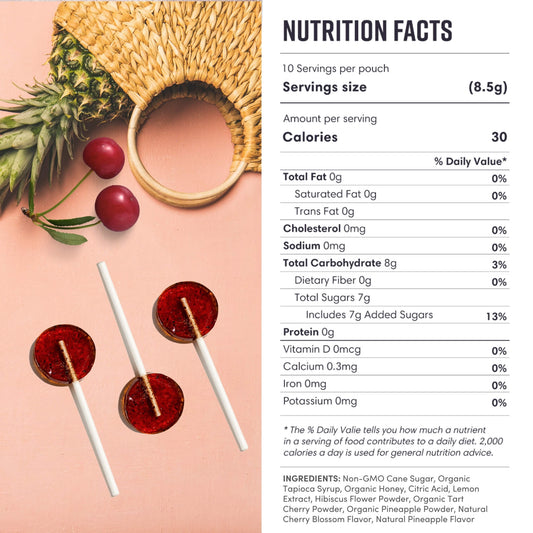So, let's talk about over-the-counter antibiotics. I feel like we all have them in our medicine cabinets, right? That little tube of ointment you reach for anytime there's a scrape. It feels like the responsible thing to do, to just zap any potential infection right away. But I've been thinking about it a lot lately, and it's not so simple. It's really important to know what we're actually using, if it's even working, and what the risks are. So, I wanted to just sort of... unpack all of that. We'll go through what these things are, the good and the bad, how to be smart about them, and maybe some other things we can try first.
Understanding Over-the-Counter Antibiotics
Over-the-counter antibiotics are basically the ones you can get without a prescription. You can find them pretty much anywhere—pharmacies, grocery stores, you name it. They’re super accessible, which is great when you need to deal with something small right away and don't want to make a whole doctor's appointment. The thing is, that same easy access means it's also really easy to misuse them, you know? It's so tempting to just play doctor and assume you know what's going on, but that can get a little tricky.
Definition and Types of Over-the-Counter Antibiotics
When we talk about OTC antibiotics, there are really two kinds: the stuff you put on your skin and the stuff you take by mouth. The topical ones are way more common—think about those antibacterial ointments like bacitracin and neomycin. We all use them for little cuts and scrapes to keep them from getting infected. Some of the fancier creams have other things in them to help with healing, which is nice.
Oral antibiotics, the kind you swallow, are much harder to find over the counter, and honestly, that's probably a good thing. The ones that are available usually target very specific things. But just because you can buy something off the shelf doesn't automatically make it harmless. We should probably know a little more about what we're grabbing.
The Role of Antibiotics in Health Care
I mean, let’s be honest, antibiotics are incredible. They've completely changed modern medicine. They fight off bacterial infections and have made things like surgery so much safer. It's easy to take them for granted, but they've saved so many lives and turned scary illnesses into things we can actually manage.
But here’s the thing that I think a lot of people get wrong—I used to, anyway. Antibiotics only work on bacterial infections. They do absolutely nothing for viruses, like a cold or the flu. It’s like trying to use a key in the wrong lock. And using them when you don’t need to is a huge problem. It's what's leading to this scary thing called antibiotic resistance, where the bacteria get stronger and our medicines stop working. It’s a huge public health issue, and it really comes down to us using these powerful tools in the right way.
The Pros and Cons of Over-the-Counter Antibiotics
Okay, so when we're thinking about using these, it’s a good idea to weigh the good against the not-so-good. They can be a quick fix, but there are definitely some risks to keep in mind.
Benefits of Over-the-Counter Antibiotics
This is how I usually remember the good parts:
-
Accessibility: You don't need a prescription, so you can get treatment started faster.
-
Convenience: You can just pick them up at your local pharmacy. So easy.
-
Immediate Relief: They're really handy for those minor things you want to deal with right now.
I get it. It’s late, your kid just took a tumble, and being able to run to the store and grab something feels like a lifesaver. In a world where we’re all so busy, not having to schedule a doctor's visit for every little thing is a huge plus. It gives you a little bit of control over the small stuff.
Potential Risks and Drawbacks
And here's the other side of the coin:
-
Misdiagnosis: You might be treating the wrong thing, which could make the real problem worse.
-
Incomplete Treatment: People often stop using them as soon as things look better, which can help create resistant bacteria.
-
Side Effects: You could have an allergic reaction or other issues, like an upset stomach.
This is the part that worries me. Without a doctor looking at it, you’re just guessing. And the whole antibiotic resistance thing is real. It’s not some abstract problem for scientists to solve; it's happening in our communities because of how we use—and overuse—these medicines. Sometimes, an infection is viral, and an antibiotic won't help at all. It’s so important to know what you’re actually fighting before you choose your weapon.
Safe Use of Over-the-Counter Antibiotics
If you do decide to use an OTC antibiotic, it's so important to be smart about it. Following the rules can make all the difference in getting better and not causing other problems.
Correct Dosage and Administration
It sounds so obvious, but just read the instructions on the box. Seriously. Follow what the manufacturer says. If it says to apply a thin layer, don't just slop it on there. Make sure the skin is clean and dry first. If you’re using one of the rare oral kinds, pay attention to whether you should take it with food or not. Those little details actually matter for how well the medicine works. If you’re ever confused, just ask the pharmacist. That’s what they’re there for.
Recognizing and Managing Side Effects
It's also super important to just pay attention to your body. If you're using a cream, you might see a little redness or itching, which can be normal. But if you start getting a major rash or feel really sick, that’s your body sending up a flare. For oral antibiotics, things like nausea or diarrhea can happen. If anything feels really wrong or severe, don't wait—get medical help. It's always better to be safe. Keeping a little mental note of how you're feeling can help your doctor figure things out if you do need to see them.
Antibiotic Resistance and Over-the-Counter Antibiotics
This is probably the biggest, scariest issue connected to antibiotics, whether they're prescription or not. Antibiotic resistance is a huge deal. It’s when the bacteria smarten up and evolve so that our medicines can't kill them anymore.
The Concept of Antibiotic Resistance
I kind of think of it like this: every time we use an antibiotic, it's like we're sending the bacteria to the gym. The weak ones die off, but the strongest ones survive, and they learn from the experience. They pass that strength on, and over time, we end up with "superbugs" that are really, really hard to treat. This can turn a simple infection into something life-threatening. It's a crisis that's growing, and it's mostly because we've been careless with these medicines.
How Overuse of Antibiotics Can Lead to Resistance
Using OTC antibiotics when they aren't needed is a big part of the problem. Every time we use an antibiotic cream on a tiny cut that would have healed just fine on its own, we’re giving bacteria another chance to train and get stronger. Or when we don't finish the full course of treatment because we feel better, we're leaving the strongest bacteria behind to multiply. We have to be more mindful. The health of future generations kind of depends on it, which is a heavy thought, I know.
Alternatives to Over-the-Counter Antibiotics
Okay, so if we’re trying to be more careful with antibiotics, what can we do instead? This is the part that I find really empowering. There are so many natural things out there that can help with minor infections. Exploring these options has been a real game-changer for me.
Here’s what I keep in mind for my own family:
-
Honey: I’ve read so much about its antibacterial properties. You can put it right on a small wound. It’s been used for centuries for a reason.
-
Garlic: People call this nature's antibiotic. The compound in it called allicin seems to be what does the trick.
-
Essential Oils: Things like tea tree oil and eucalyptus oil are amazing for their antimicrobial powers. I always have them on hand for little cuts, but you have to dilute them with a carrier oil first.
Of course, these natural remedies are for minor things. For anything serious, you have to talk to a healthcare professional. But having a strong immune system is your best first line of defense anyway, so a good diet is always a great place to start.
When to Seek Professional Medical Help
Let's be really clear here. As much as I love natural remedies, there are times you absolutely need to see a doctor. This isn't something to mess around with. You should call a professional if:
-
Your symptoms just aren't getting better, or they're getting worse.
-
You have a high fever or other signs that the infection is serious.
-
You're worried you might be having an allergic reaction.
A doctor can give you a proper diagnosis and make sure you get the right treatment. Trust your gut—if you feel like you need to see someone, you probably do.
Conclusion
I guess, when it's all said and done, it comes down to being more thoughtful. It's so easy to just reach for a quick fix, but maybe the better thing to do is pause and ask if it's really necessary. Thinking about the bigger picture—like antibiotic resistance—makes me want to be more careful with what's in my family's medicine cabinet. It’s a small shift, but I have to believe those small shifts matter in the long run.










